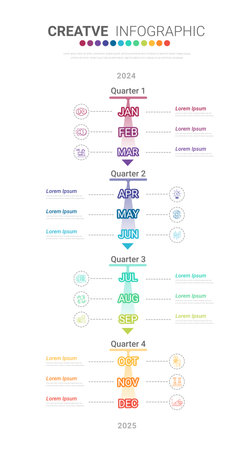Introduction to Palm Reading in British Culture
Palm reading, also known as chiromancy, has woven itself into the tapestry of British folklore for centuries. Originating from ancient traditions that travelled across continents, palmistry gained popularity in Britain during the Victorian era, a period marked by fascination with spiritualism and the occult. Today, palm reading continues to be a familiar presence at fairs, seaside towns, and even within private homes across the UK. While it may not hold the mainstream status it once did, its allure persists—often seen as an intriguing curiosity rather than a serious predictor of fate.
Attitudes toward fortune-telling in Britain are complex and varied. On one hand, there is a longstanding tradition of healthy scepticism; critical thinking is deeply valued in British culture, and claims of supernatural insight are typically met with polite doubt or humour. On the other hand, many Britons still enjoy engaging with palmistry and other forms of divination for entertainment or self-reflection. The practice’s enduring appeal lies less in literal belief and more in its ability to spark conversation, encourage introspection, and provide a sense of connection to both history and community. As such, palm reading occupies a unique space in British society—bridging the gap between cultural heritage and contemporary curiosity.
2. Public Attitudes: Where Brits Stand on Palmistry
In Britain, public opinion towards palm reading—whether at home or by professionals—reflects a mixture of curiosity, caution, and cultural tradition. The British are known for their ‘healthy scepticism’, a blend of open-mindedness and critical inquiry that often shapes social attitudes toward practices like palmistry. While some may approach palm reading as harmless entertainment or a quirky pastime at parties, others hold firmer views rooted in science, religion, or rationalism.
Analysis of British Public Opinion
Surveys and anecdotal evidence suggest that the majority of Brits do not take palmistry literally but may still engage with it for fun or out of curiosity. This attitude aligns with the broader British disposition toward unconventional beliefs: respectful tolerance paired with a pinch of irony. Among younger generations, especially in urban areas, palm reading is often seen as an icebreaker or a nostalgic nod to folklore rather than a genuine attempt to predict the future.
Cultural Acceptance and Social Perceptions
The cultural acceptance of palmistry in Britain varies across regions, age groups, and social backgrounds. To illustrate these differences, consider the following table:
| Group | Perception | Cultural Acceptance |
|---|---|---|
| Younger Adults (18-30) | Entertainment, social activity | Moderate; often playful |
| Older Adults (60+) | Sceptical or dismissive | Low; seen as superstition |
| Urban Residents | Trendy curiosity | Higher; part of alternative culture |
| Rural Communities | Traditional or wary | Mixed; linked to folklore |
| Religious Groups | Pseudoscientific or unorthodox | Low; sometimes discouraged |
| Scientific Community | Pseudoscience; lacks evidence | Very low; rejected on empirical grounds |
British-Specific Viewpoints on Palm Reading at Home
A uniquely British aspect is the wry humour with which people approach home palm reading. In many homes, it is treated as a light-hearted diversion rather than a serious pursuit. At gatherings, someone might jokingly offer to ‘read your fortune’ with tongue firmly in cheek. Yet, there’s also an undercurrent of respect for personal choice: live and let live is a guiding principle. Public discourse rarely vilifies palmists but does emphasise informed consent and awareness—encouraging individuals not to conflate entertainment with expertise.
This nuanced landscape underscores how British society negotiates tradition and modernity: open to exploration but grounded in critical thinking—a hallmark of healthy scepticism.

3. Scientific Examination of Palm Reading
From a scientific and sceptical perspective, the practice of palm reading—or palmistry—has long been scrutinised for its lack of empirical foundation. In Britain, as elsewhere, scientific inquiry prioritises evidence-based methods and reproducible results. To date, no robust scientific studies have demonstrated that the lines and shapes on one’s palm reliably correlate with personality traits, future events, or health outcomes. This absence of empirical support forms the crux of healthy scepticism within the UK’s academic and scientific communities.
Most of the claims made by palmists remain anecdotal, with reports relying heavily on subjective interpretation and confirmation bias. The so-called “Barnum effect”—where individuals believe vague, general statements to be highly accurate for them personally—often comes into play during readings. While some enthusiasts might cite historical texts or personal testimonies as validation, these sources do not meet the rigorous standards expected in modern British science.
Furthermore, controlled experiments attempting to test palmistry’s validity have generally failed to show statistically significant links between hand features and psychological or physiological characteristics. Without a plausible mechanism explaining how palm lines could reflect or predict aspects of an individual’s life, palmistry remains categorised by mainstream British scientists as a pseudoscience rather than a legitimate diagnostic tool.
This healthy scepticism is not rooted in hostility but in a commitment to critical thinking and the demand for verifiable proof. For those interested in home palm reading across Britain, recognising these limitations encourages more informed engagement with such practices, distinguishing entertainment from empirical fact.
4. Ethics, Regulation, and Consumer Protection
Within the United Kingdom, palm reading—often referred to as chiromancy—exists in a regulatory grey area. While it is considered an entertainment service rather than a scientific or medical practice, several legal and ethical guidelines do apply. This section examines the frameworks that govern palm reading businesses, the ethical responsibilities of practitioners, and guidance for consumers seeking these services.
Regulatory Frameworks in the UK
Palm reading, along with other forms of fortune-telling, falls under the Consumer Protection from Unfair Trading Regulations 2008. This legislation aims to protect individuals from misleading claims and unfair commercial practices. Practitioners are legally obliged to clarify that their readings are for entertainment purposes only and should not be interpreted as professional advice.
| Regulation/Guideline | Description | Implications for Palm Readers |
|---|---|---|
| Consumer Protection from Unfair Trading Regulations 2008 | Prohibits false claims and misleading advertising in consumer services. | Must avoid suggesting supernatural accuracy or guaranteed outcomes. |
| The Fraudulent Mediums Act 1951 (repealed but referenced) | Previously governed psychic and spiritualist activities; now replaced by general consumer law. | Modern practitioners follow consumer protection laws instead of spiritualist-specific regulation. |
| Advertising Standards Authority (ASA) Guidelines | Regulates claims made in advertisements, including websites and social media. | Claims must be substantiated; disclaimers about entertainment value are required. |
Ethical Considerations for Practitioners
The ethical obligations of palm readers centre on transparency, honesty, and respect for client autonomy. Practitioners should clearly communicate the entertainment nature of their service and refrain from exploiting vulnerable individuals seeking answers during difficult times. Ethical codes recommend that no health, legal, or financial advice be given under the guise of palmistry.
Best Practices for Ethical Palm Reading
- Always provide a clear disclaimer regarding the non-scientific basis of palmistry.
- Avoid preying on vulnerable clients or making promises about life events.
- Refer clients to qualified professionals for medical, legal, or mental health concerns when appropriate.
- Respect client confidentiality and privacy at all times.
Guidance for UK Consumers
The British public is encouraged to approach palm reading with healthy scepticism. Consumers should verify that practitioners adhere to regulatory requirements and display appropriate disclaimers. The following checklist may help individuals make informed choices:
Palm Reading Consumer Checklist
- Check for a visible disclaimer noting the entertainment nature of the service.
- Avoid services making medical, legal, or guaranteed life predictions.
- Confirm that fees are transparent and agreed upon before any reading begins.
- If in doubt, consult resources from Citizens Advice or Trading Standards.
This balanced approach ensures that both practitioners and consumers navigate palm reading within ethical boundaries while respecting personal beliefs and UK law.
5. The Appeal: Why Home Palm Reading Persists
Despite the scientific communitys generally sceptical stance on palm reading, its popularity within British households endures. This persistence can be attributed to a range of psychological and social factors that are deeply rooted in the fabric of everyday life. For many, home palm reading is less about genuine belief in mystical powers and more about the allure of curiosity and personal reflection. Britons, known for their fondness for tradition and storytelling, often view palm reading as an engaging parlour activity that sparks conversation and self-exploration. It offers a structured way to discuss hopes, fears, and aspirations—topics that might otherwise be difficult to broach in casual settings.
At a psychological level, palm reading provides comfort by offering narratives that help individuals make sense of their lives or current situations. In uncertain times, people may turn to such practices for reassurance or guidance, even if they consciously doubt the validity of the predictions. The human brain is wired to seek patterns and meaning, making it easy to find relevance in generic statements—an effect well-documented by cognitive psychologists as the Barnum or Forer effect.
Socially, home palm reading thrives because it facilitates connection. It acts as a low-stakes form of entertainment during gatherings, bridging generations and bringing families together around a shared cultural pastime. In British society, where subtlety and indirectness often characterise emotional expression, activities like palm reading can serve as a gentle gateway to more open communication.
Furthermore, the non-committal nature of home-based readings allows participants to engage without feeling pressured to accept outcomes as absolute truths. This flexibility appeals to the British sense of pragmatic scepticism: one can enjoy the ritual while maintaining a healthy dose of doubt. Ultimately, it is this blend of curiosity, psychological comfort, social bonding, and cultural tradition that explains why palm reading maintains its foothold in British homes—even in an age dominated by science and rationality.
6. Encouraging Healthy Skepticism in Everyday Life
In an era where home palm reading and similar practices are gaining popularity across Britain, nurturing a culture of healthy scepticism is more important than ever. Scepticism does not mean cynicism; rather, it is about questioning claims, seeking evidence, and making informed decisions. Here are practical strategies and resources for encouraging critical thinking—both at home and in the wider community.
Practical Advice for Individuals
For those intrigued by palmistry or other mystical practices, start by asking yourself key questions: What evidence supports this claim? Who benefits from promoting this idea? Are there alternative explanations grounded in science? Try to consult reputable sources such as the NHS, Sense about Science, or the British Psychological Society when evaluating health or psychological claims. Engaging with friends and family in open discussions can also help challenge assumptions and broaden perspectives.
Promoting Critical Thinking Skills
Developing critical thinking skills is essential. Practice recognising logical fallacies and cognitive biases that often underlie pseudo-scientific beliefs. Encourage children and young people to ask ‘how’ and ‘why’, fostering curiosity instead of passive acceptance. Many UK schools now include elements of scientific literacy in their curriculum; adults can supplement this by participating in local science festivals or public lectures at institutions like The Royal Institution or Wellcome Collection.
Community Resources for Informed Scepticism
Communities can play a pivotal role in spreading healthy scepticism. Local libraries frequently offer workshops on evaluating information sources, while community centres may host talks by experts in psychology or neuroscience. Online forums such as The Skeptic Magazine UK provide accessible discussions on science and rationality. By supporting these initiatives, individuals contribute to a more informed society less susceptible to misleading claims.
Ultimately, whether you’re confronted with palm reading at a local market or health advice on social media, taking a moment to pause, question, and seek evidence is vital. By integrating these habits into daily life, we uphold the values of reasoned enquiry that underpin both British scientific tradition and responsible citizenship.


